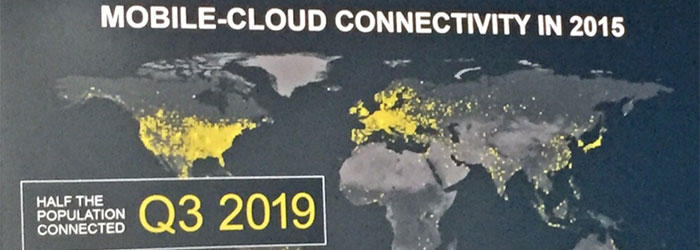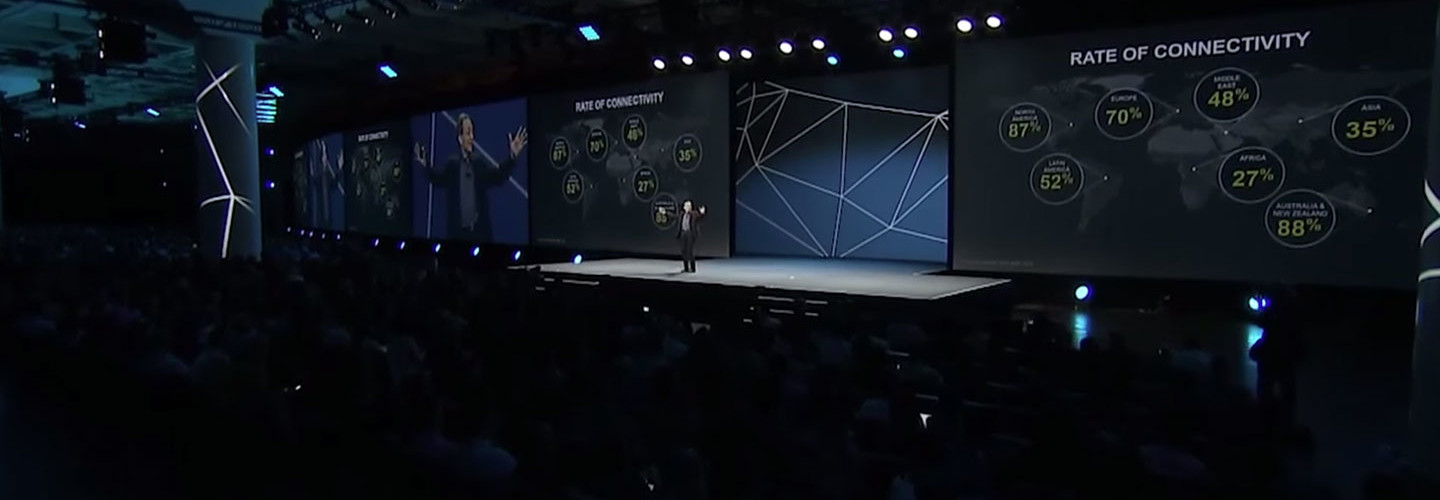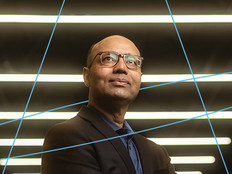VMworld 2015: 5 Imperatives for Digital Business
As the mobile cloud connects billions of people daily across the world, businesses of all sizes jockey for relevance in an increasingly fluid IT era.
Since the beginnings of the Internet more than 20 years ago, VMware CEO Pat Gelsinger has been at the center of this digital awakening.
“I’ve always said in my career that I want to participate in the creation of a piece of technology that touches every human on Earth and every modality of their life,” he said on Tuesday at VMworld 2015. “Maybe in the next five years we’ll get half way there.”
With $8 trillion flowing through Internet commerce today, there’s never been a better time for the technology community to influence change on Earth, he said.
Gelsinger offered five imperatives for success in this rapidly evolving era of digital business.
1. “Innovate like a startup. Deliver like an enterprise.”
Whether it’s Airbnb disrupting hospitality, Uber impacting transportation or Tesla challenging automotive — the power of nimble startups shakes legacy industries.
“People are changing the rules of the game,” Gelsinger said. “There are these loose startups that are attacking the incumbents.”
Startups are nothing new, but cloud-based technology has fueled their power in recent years, he explained.
“If we think about the Internet and its unlimited reach, if we think about mobile phones, we have unlimited access. And if we think about cloud, we have unlimited scale,” he said. “Throw in some crazy venture capitalists, and we have unlimited capital as well.”
As a result, vertical industry incumbents across the world face attacks from well-equipped startups.
“This is the best time in history to be a challenger versus the status quo,” he said.
2. “Can’t clouds just get along?”
We’re entering the professional era of the cloud, Gelsinger said, and leaving the experimental era.
But first we must reflect on accomplishments made so far. With the majority of IT’s focus today, the cost-driven private cloud offers slow and complex applications, yet powerful governance and utility, he said.
On the other side, the public cloud brings speed and scalability, but with weak governance, he said.
“We have a disconnected and disjointed picture today,” Gelsinger explained. “As we look to future, we need to go to the professional era where we’ve built an environment that enables efficiency, governance, speed and growth.”
VMware calls this the unified hybrid cloud, where applications launch into the span between public and private clouds — not into either silo.
“The unified hybrid cloud is about enabling a global point of view across multiple clouds,” he said. “They’re all connected, an operating model of a single cloud across all these instances.”
3. “Architect-in security.”
The strength or fragility of today’s technology lies in security. But according to Gelsinger, up to now, we’ve been doing it wrong.
“The security industry has been challenged, has been messy, has been complicated,” he said. “And we spend the bulk of our dollars on products we know don’t really solve a problem. It’s viewed as a safety blanket, but it simply isn’t working.”
Security tops most IT agendas, and a thriving startup scene has capitalized on skyrocketing security spending. But the cost of breaches are also climbing, he said.
VMware believes that virtualization provides the fundamental requirement allowing IT to architect for security.
“What we now can do for the first time is truly architect-in security, and virtualization enables that layer of alignment and ubiquity,” he said. “Architected-in security allows us to be twice as secure at half the cost. We believe a time for a renaissance in security has begun.”
4. “Automate everything.”
Artificial intelligence is at the heart of the next wave of innovation, but it will take about 30 years for these technologies to emerge and gestate, Gelsinger said.
“We’ll see AI ushering in an age where we go from being reactive to being proactive” he said. “We’re on this cusp of an era where software agents and capabilities working on our behalf will simply change human experiences.”
A major speed bump to wide adoption of AI lies in changing perceptions of the technology — in other words, separating the creepy from the convenience.
“What we might feel is invasive today becomes invaluable tomorrow,” he said. “And if we look under the hood of this proactive technology era, it’s going to be enabled by Big Data.”
Big Data makes AI’s brain, essentially. Combined with enormous repositories of real-time data, historical data, analytics and proven algorithms, Big Data then generates its thoughts, he said.
“We truly are entering an age of proactive technology,” he said. “Rule number one of building a cloud: Ruthlessly automate everything. Collect every piece of data, keep it forever, and that will allow us to predict almost everything going into the future.”

5. “Seize the day.”
As more people connect via the mobile cloud and more businesses rely on Internet-enabled technology — and as the fast-pace of disruption puts more pressure on IT — many companies won’t survive the next decade, Gelsinger warned.
“I believe that the change will be even more dramatic for the IT industry,” he said. “Of the top 100 IT companies, 50 of them will disappear in the next decade.”
But those in the IT community are sitting pretty at the center of influence — if they want it.
“Welcome to the age of rattling the cage,” he said. “Or in business terms, taking risk becomes the lowest risk. You must break out to stay relevant in this future.”
The enterprise now looks to IT for leadership in the digital business era.
“You have an opportunity to lead as you never have before,” he said. “Seize the day in your environment. Be the entrepreneur and innovator in your respective businesses.”








